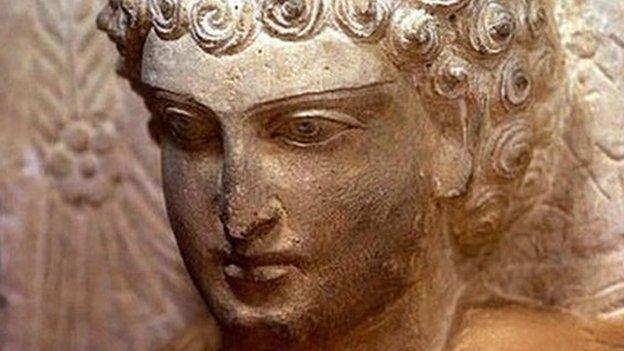Palmyra: Islamic State's demolition in the desert
- Published
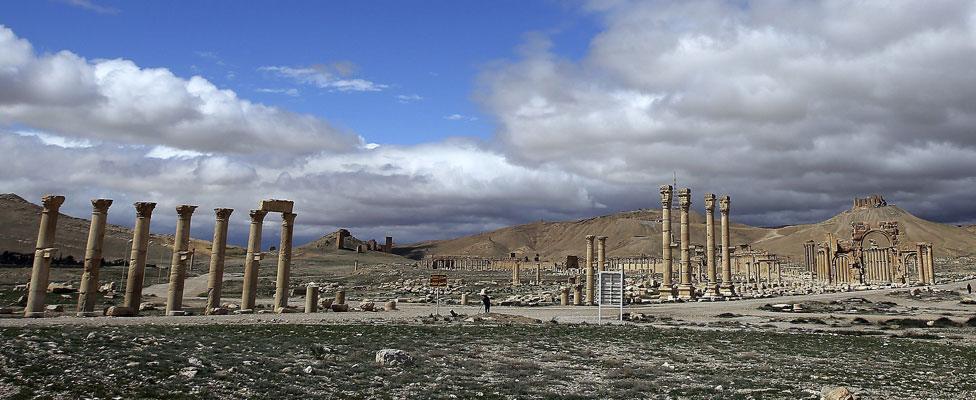
Palmyra: Blowing ruins to rubble
Satellite images of the ancient ruins of Palmyra in Syria have revealed the extent of the destruction there caused by Islamic State militants.
Temples, burial towers and now the Arch of Triumph at the desert oasis dating back more than 2,000 years have been deliberately set with explosives and blown up by the jihadists, who believe shrines or statues are idolatrous.
The United Nations' cultural agency Unesco has condemned the wanton destruction as a war crime. But experts also suspect the militants are looting the site to sell artefacts on the international antiquities market.
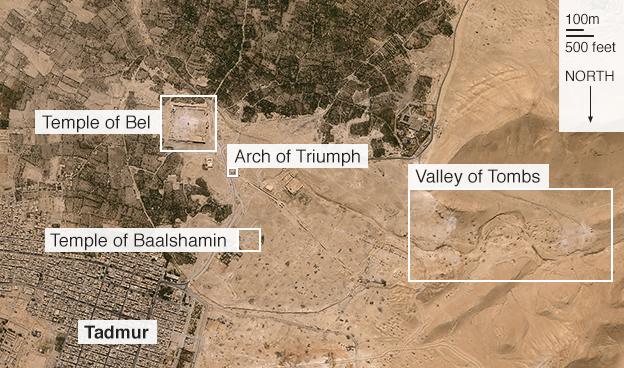
The destruction also seems to serve as IS propaganda - the group has also blown up visible, symbolic structures such as the North-West Palace at Nimrud in Iraq and other pre-Islamic sites, as well as several Islamic shrines, in Iraq and Syria.
In Palmyra, the Temple of Bel - the great sanctuary of the Palmyrene gods - was, until its destruction in August, one of the most important religious buildings of the 1st Century AD in the East.
Temple of Bel
In its heyday, Palmyra was one of most important centres for trade in the region.
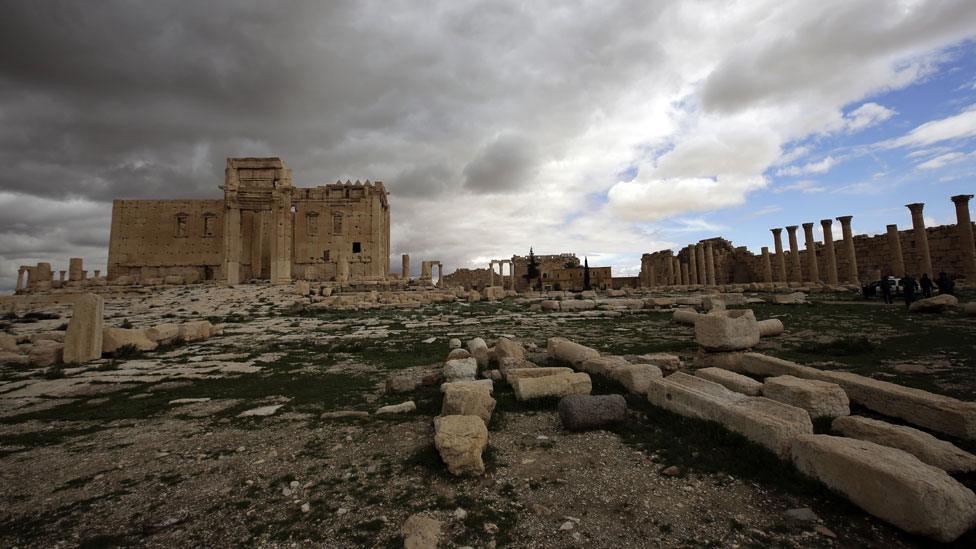
The Temple of Bel, once the centre of religious life in Palmyra, was destroyed in August
From around 2000BC, the site was almost continuously occupied - as a key oasis on the Silk Road meant it offered a shortcut across the desert without having to travel up through fertile regions to the north. It continued to thrive until the 3rd Century AD when it was razed to the ground by the Romans following the rebellious rule of Palmyrene Queen Zenobia.
The connection between East and West is reflected in Palmyra's unique and distinctive art and architecture - combining Eastern with Western traditions. The Temple of Bel, with its unique reliefs, looks like an Eastern temple but also has columns like a Western-style Roman building.
But that symbolism also seems to have been its downfall in the eyes of IS.
A huge explosion rocked the site at the end of August this year and satellite images subsequently showed the main structure had been reduced to rubble, as well as a line of columns beside it.
Analysts at McKenzie Intelligence Services say either the remains of the shrine were pulverised during demolition, or were removed as there is no indication of large spoil piles. All that remains of the shrine is the archway that formed the western entrance.
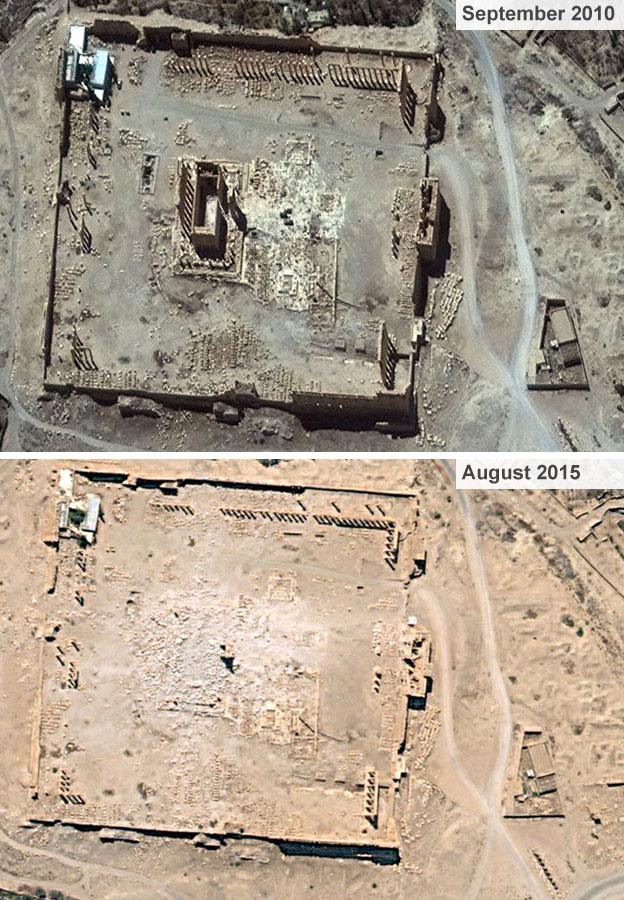
Satellite images show Palmyra's once majestic Temple of Bel before and after its destruction by Islamic State militants
Dr Mark Altaweel, of the UCL Institute of Archaeology in London, believes IS wants to show its audience that it is doing its religious duty by destroying "unreligious" objects.
"That is the symbolic value of the destruction of these things," he says. "They are not blowing up the entire site - they are picking specific spots."
He says the loss of such sites is sadly ironic.
"One sad thing is that these structures and art try to reflect the integration of Eastern and Western cultures that were mixing at the time. Now we are having this great conflict within and it is almost the opposite and that is why they are being destroyed."

Some statues and artefacts from Palmyra are stored in museums, but others have been looted
Valley of the Tombs
A short distance from the main temples and once grand colonnaded streets is an area known as the Valley of Tombs.
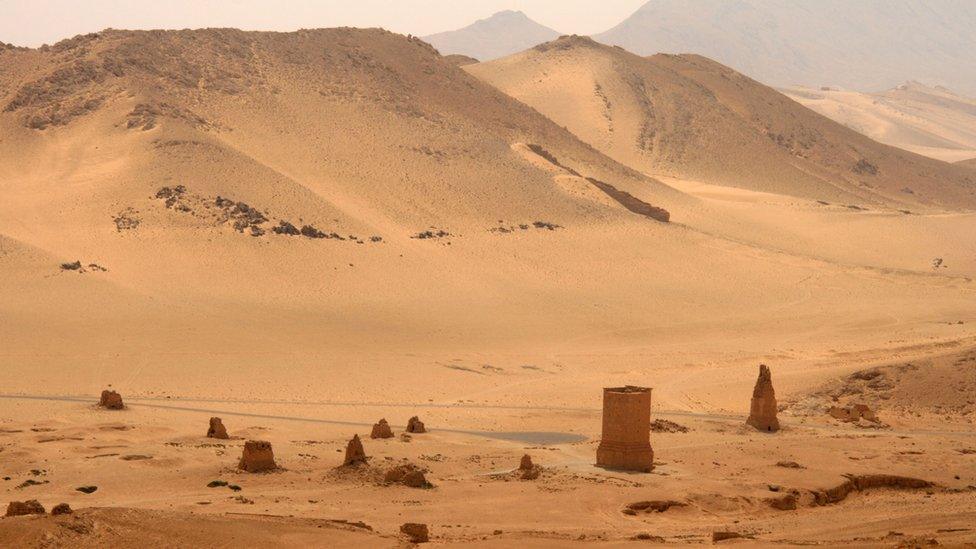
The tower tombs built on higher ground are a distinctive feature of Palmyra. The towers have several floors, often with a subterranean burial chamber below.
But the resting places of ancient families made rich by trade have also become a target for IS explosives.
Iamblichus Tomb
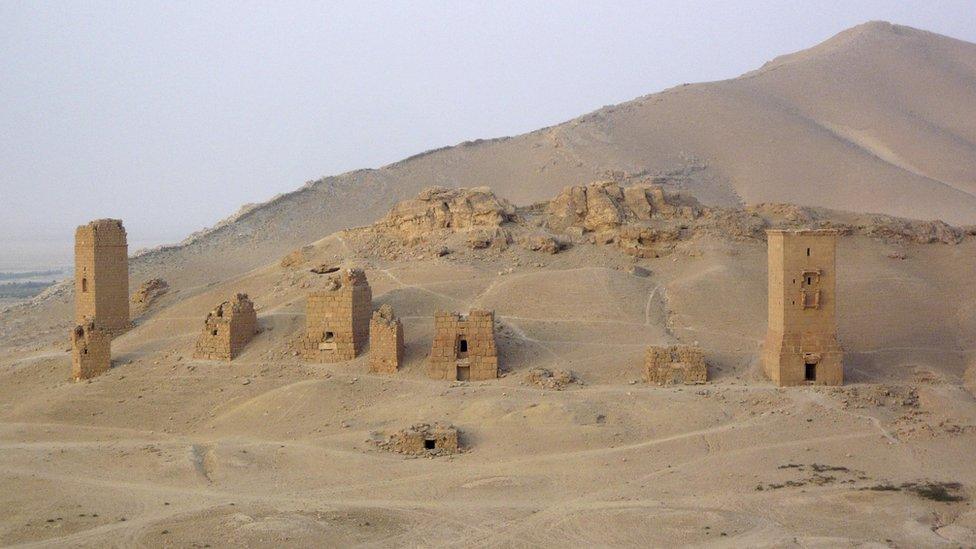
The Tomb of Iamblichus is the construction on the far right of this photo from 2010
Professor Kevin Butcher, of Warwick University, says it would appear that burial spots in the tombs could once be bought and the builders may have seen them as investments, not just as burial places for family members. The dead were often mummified before being placed in the tombs - where fragments of cloth wrappings, including Chinese silks, and Palmyrene imitations of Chinese silks, have been found.
The Tomb of Iamblichus - named after is founder and built in around AD38 was well preserved. It boasted ornately carved on the lintels around the entrance, inside were niches to house the dead called "loculi", each sealed with a portrait of the deceased, carved in limestone. The Tomb of Iamblichus and others nearby have been reduced to rubble.

Satellite images from September show the Iamblichus Tomb and others nearby have been destroyed
Tombs of Elahbel and Atenatan
In total, Islamic state have destroyed at least six tower tombs, including the Tomb of Elahbel - also built as a burial tower, around AD103 - and the nearby Tomb of Atenatan.
Professor Butcher says the Tomb of Elahbel was the best preserved of the Palmyrene tower tombs.
"It would appear from satellite images that most of the well-preserved tower tombs have now been destroyed," he said. "The loss of these structure is highly significant; there is nowhere else where such buildings have been fully preserved."
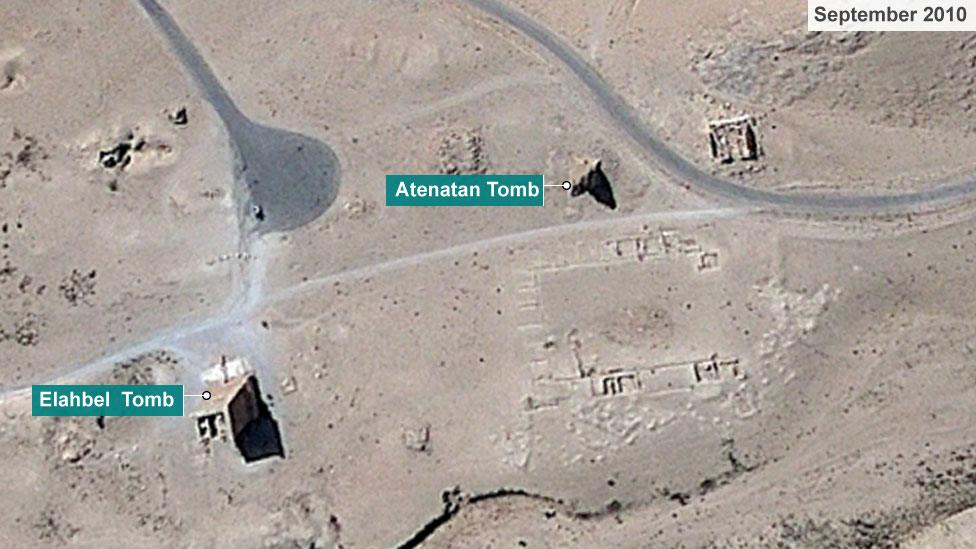

Changing beliefs among the people living at Palmyra meant the dead were later buried in tombs below ground.
Local antiquities experts reported the plunder of tombs even before IS took control of the area from Syrian government forces in May this year. Funeral busts, statues and head stones were stolen or damaged. But there are now suspicions that the antiquities are being sold abroad to help fund IS.
Dr Altaweel says looting helps the group fund its operations on the ground, permitting looters to come in and start digging and then taking a cut.
"Things that are not visible, they don't blow up - but if they have value, they will loot," he says, adding that some pieces can fetch anything up to and beyond $20,000-30,000 (£13,100-19,700) on the international black market.
There have been efforts to stop the artefacts and treasures of Palmyra falling into IS hands - but with tragic consequences. The 81-year-old archaeologist Khaled al-Asaad, who looked after ancient ruins for 40 years was beheaded by Islamic State in August, after he reportedly refused to reveal where treasures had been hidden.
Local archaeologists told the BBC's Jeremy Bowen how they helped smuggle 400 antiquities out of the site as Islamic State fighters approached.
Jeremy Bowen speaks to two of Syria's "Monuments Men"
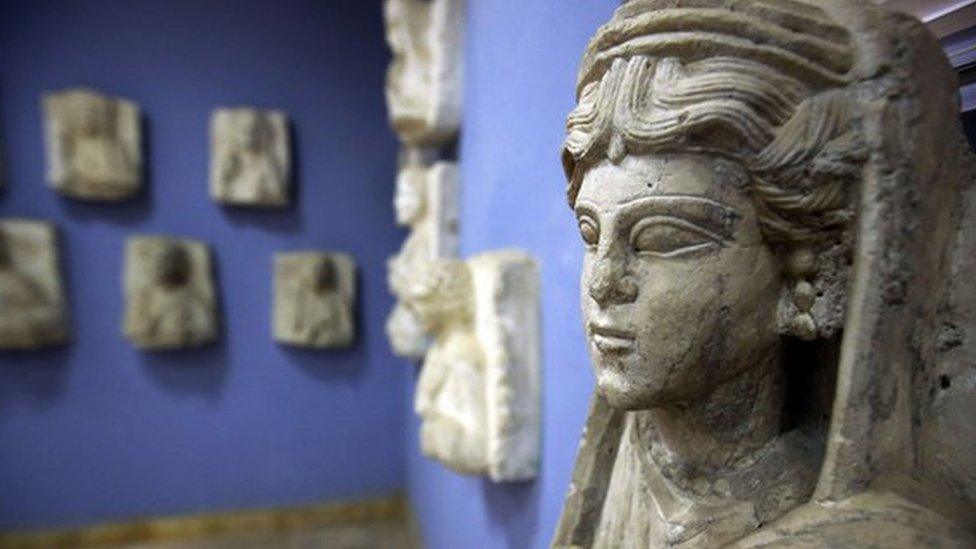
Hundreds of artefacts from Palmyra have been taken to Damascus, Syrian authorities say
Temple of Baalshamin
Another of the great structures of Palmyra was the Temple of Baalshamin, whose oldest parts dated to the 1st Century AD. Swiss archaeologists uncovered the temple in 1954-56 and the almost pristine site had been visited by millions of people until the arrival of IS.

The temples of Palmyra had been admired by archaeologists and tourists alike
Unesco described the destruction of the temple in August as "an immense loss for the Syrian people and for humanity".
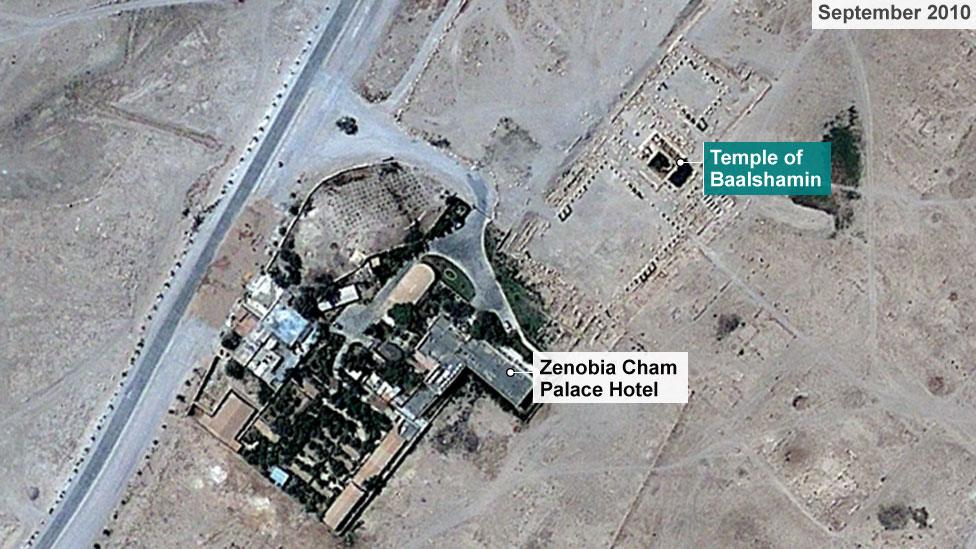
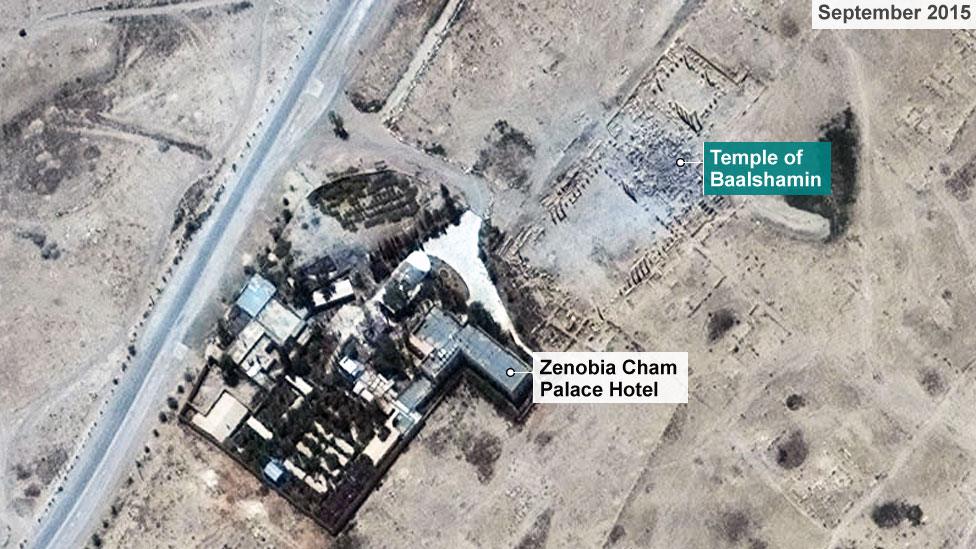
Tadmur prison
Not far from the ancient ruins is the modern-day town of Tadmur.
One of the first things Islamic State militants did when they seized Palmyra was blow up the local prison - Syria's most notorious jail.
The prison was built by the French in the 1930s. But during the rule of Bashar al-Assad's father, Hafez, between 1971 and 2000, thousands of supporters of leftist and Islamist groups were detained, tortured, and executed there.
In 1980, a day after a failed assassination attempt on Hafez al-Assad, soldiers carried out a massacre of inmates. They went from cell to cell killing prisoners with machine guns. A 2001 Amnesty International report estimates that 500 to 1,000 people were murdered in just a few minutes - most of them were members or suspected supporters of the Muslim Brotherhood.
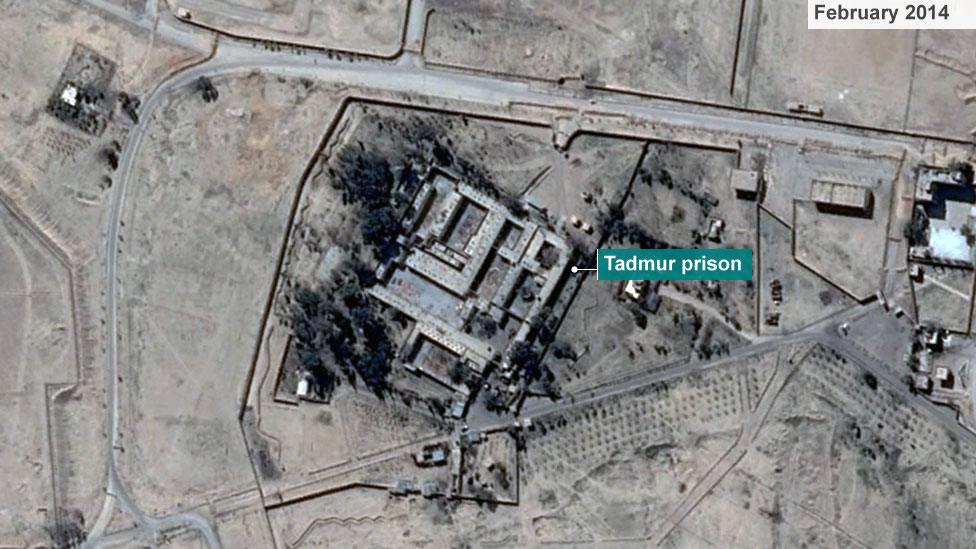


The temples of Palmyra had been admired by archaeologists and tourists alike
Related topics
- Published5 October 2015
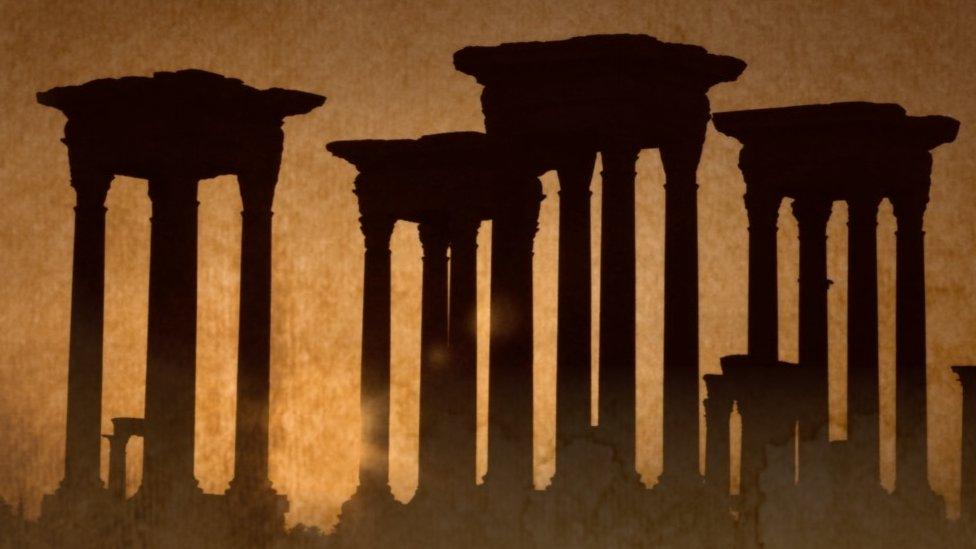
- Published4 September 2015
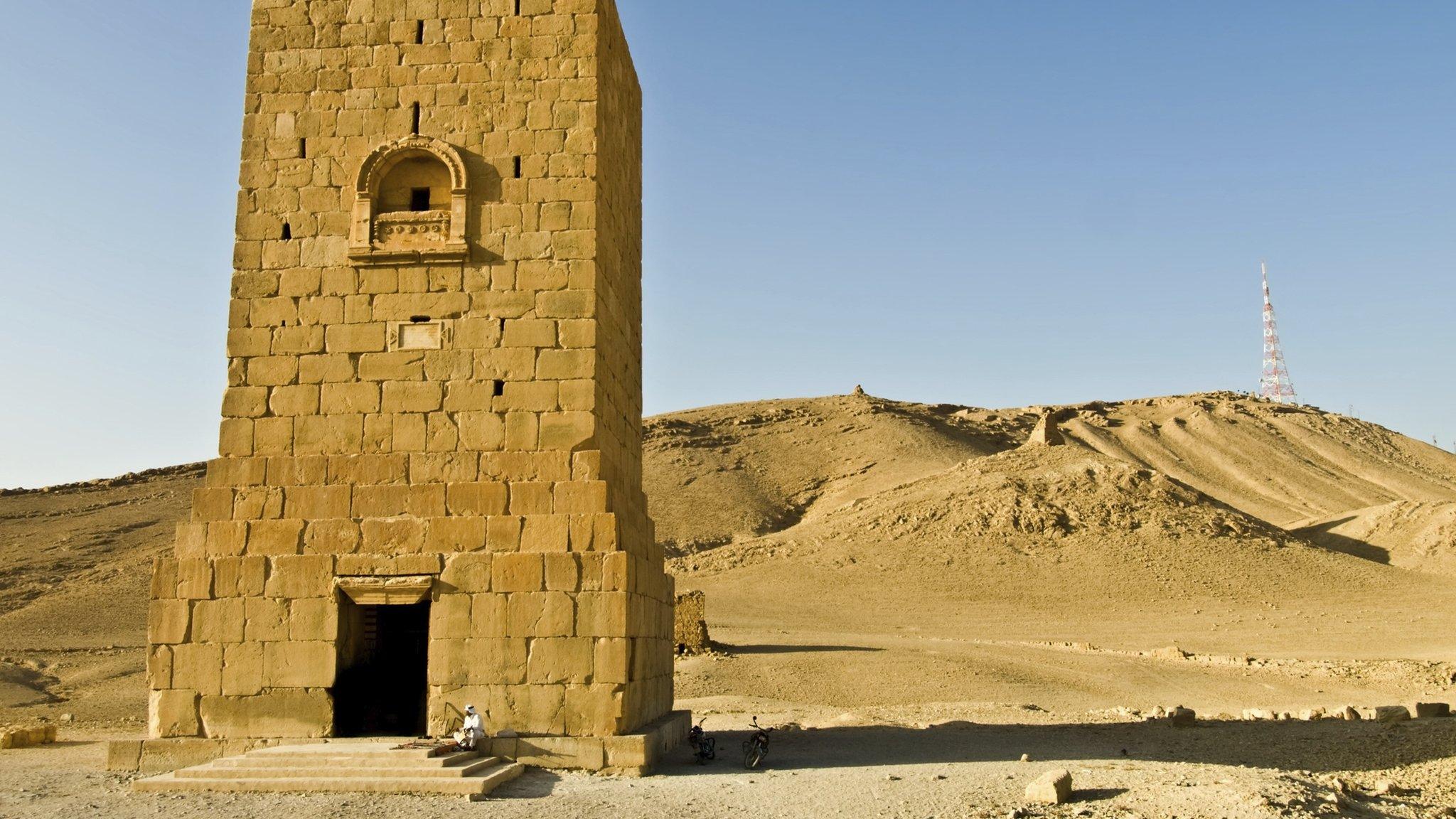
- Published1 September 2015
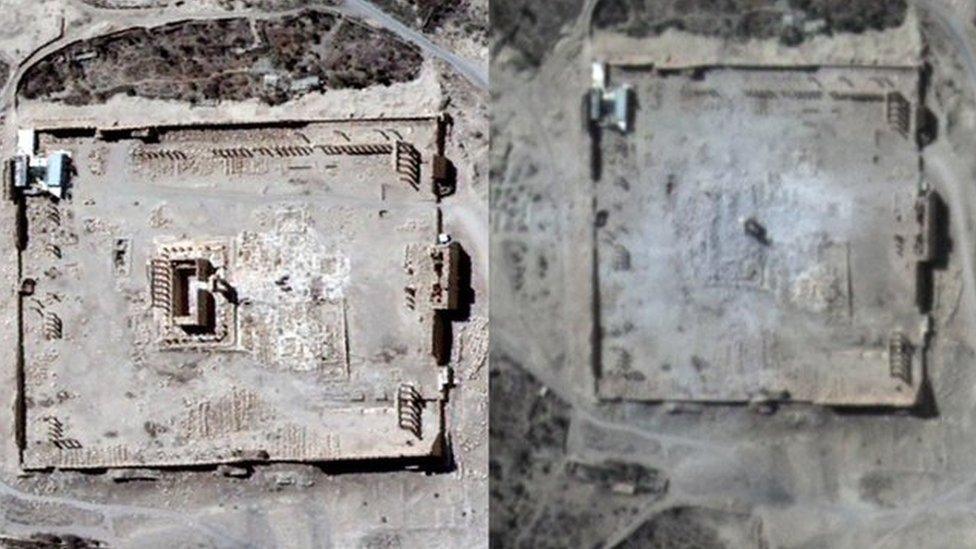
- Published24 August 2015
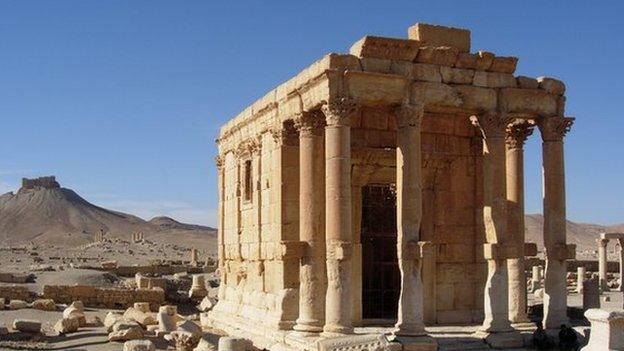
- Published25 August 2015
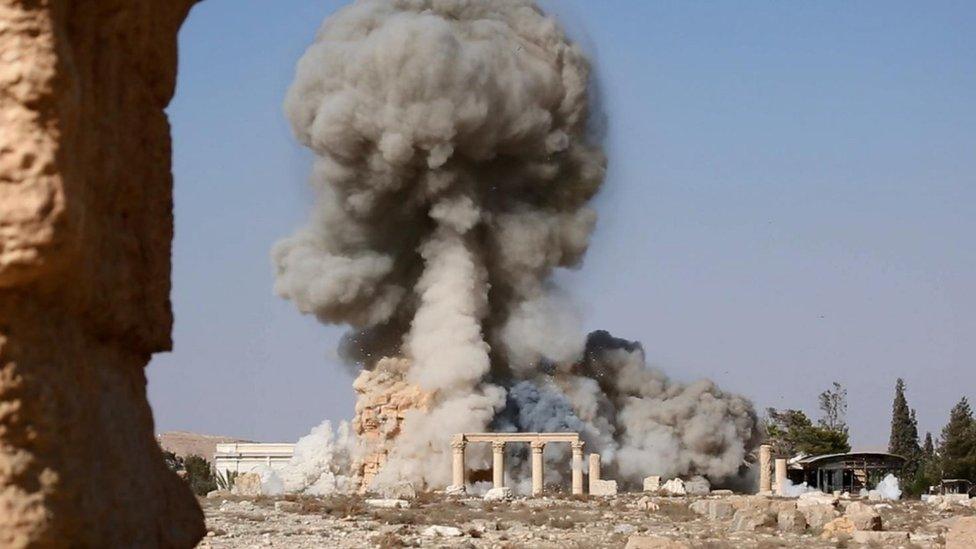
- Published4 July 2015
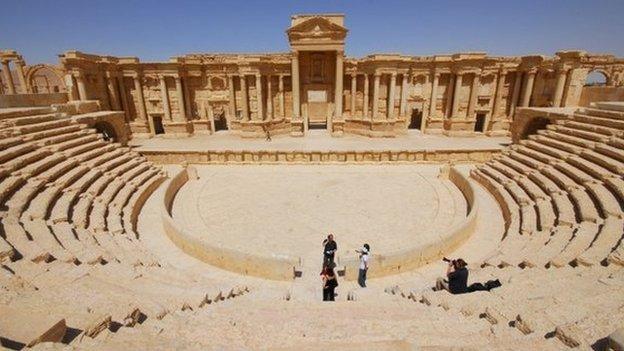
- Published15 May 2015
